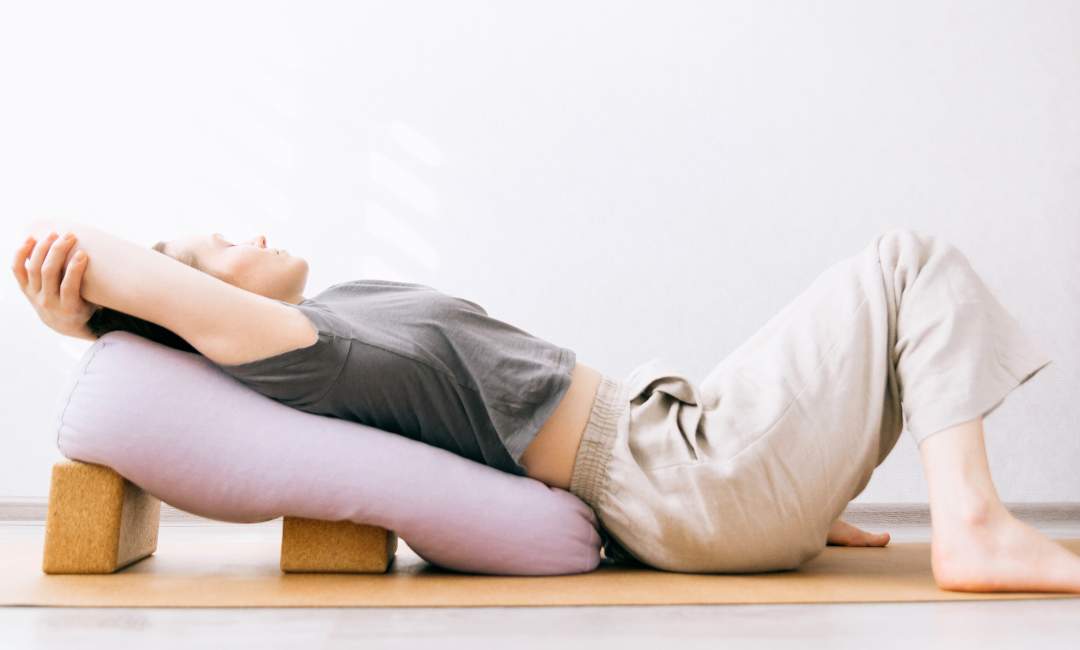Yin yoga has been gaining popularity among those seeking a more contemplative approach to yoga practice. Its focus on deep stretching and holding poses for extended periods of time can be quite different from the more dynamic styles of yoga familiar to many. If you’ve been curious about whether Yin yoga is suitable for beginners, you’re in the right place! Let’s explore what Yin yoga is, how it can benefit you as a beginner, and what you can expect from a typical class.
What is Yin Yoga? Understanding Its Essence
Before diving into whether Yin yoga is suitable for beginners, it’s essential to understand what Yin yoga is all about. At its core, Yin yoga is a slow-paced style of yoga that emphasizes long-held postures, typically ranging from three to five minutes or even longer. Unlike more energetic forms of yoga such as Vinyasa or Ashtanga, which focus on muscle engagement and movement, Yin yoga targets the connective tissues, ligaments, and fascia.
Key Elements of Yin Yoga
Long-held Poses: In Yin yoga, you’ll find yourself settling into poses for extended periods. This encourages a deep release in the body, allowing for a deeper stretch and increased flexibility over time.
Focus on Breath : Breathwork is integral to Yin yoga. Instructors guide you to connect with your breath as you hold each pose, promoting relaxation and mindfulness.
Meditative Quality : Yin yoga invites a meditative approach, encouraging practitioners to quiet the mind and be present in their bodies. This aspect makes it particularly appealing for those looking to relieve stress and anxiety.
Accessibility : Many Yin yoga poses can be modified to accommodate different skill levels and body types, making it a welcoming practice for beginners.
Now that we have a grasp of what Yin yoga entails, let’s address the burning question — is it suitable for beginners?
Is Yin Yoga Suitable for Beginners?
The answer is a resounding yes! Yin yoga is incredibly beginner-friendly for several reasons. Let’s delve into some of the key benefits that make it an excellent option for those new to yoga.
For individuals who might feel intimidated by more dynamic forms of yoga, Yin yoga offers a gentle entry point. The slower pace allows beginners to become familiar with basic poses, aligning their bodies with the correct postures without the rush. As a result, you can cultivate a greater awareness of your body and breath while easing into your practice.
Increases Flexibility and Range of Motion
One of the primary benefits of Yin yoga is its ability to improve flexibility and increase range of motion. The long-held stretches work on the deeper tissues of the body, allowing for greater release compared to traditional yoga styles. This can be particularly beneficial for beginners who may find certain movements challenging in more vigorous styles.
Stress Relief and Mindfulness
In our fast-paced world, many beginners turn to yoga as a means of finding calm and relief from stress. Yin yoga’s meditative quality encourages mindfulness and introspection. As you take the time to breathe and hold poses, you create space for stillness and relaxation, which can be incredibly rejuvenating for both the mind and body.
Encourages Self-Awareness
Because Yin yoga involves holding poses for extended periods, it encourages deeper self-awareness and introspection. Beginners can use this time to connect with their thoughts and feelings, fostering a more profound understanding of themselves. This self-awareness can be a powerful tool for personal growth and emotional balance.
Community and Connection
Yin yoga is often practiced in group settings, which fosters a sense of community and connection. As a beginner, you might find comfort in sharing the experience with others, building friendships, and feeling supported on your yoga journey. Many practitioners return to the same classes, creating lasting bonds with fellow yogis and instructors. This sense of belonging can further enhance your commitment to your practice.
What to Expect in a Yin Yoga Class: A Beginner’s Perspective
If you’re considering trying your first Yin yoga class, it’s normal to wonder what to expect. Lets take a glimpse into a typical Yin yoga class and tips for making the most of your experience as a beginner.
Setting the Atmosphere : Yin yoga classes are often held in a calm and serene environment, complete with softened lighting and ambient music. Instructors may encourage you to create a personal sanctuary with props like blankets and bolsters to support your practice comfortably.
Gentle Warm-Up: Many instructors start with a gentle warm-up to prepare your body for the longer-held stretches to come. This may include simple breaths and movements to loosen up tight areas.
Pose Sequence: You can expect a sequence of poses that focus on different body areas, such as hips, spine, and legs. Each pose is typically held for three to five minutes, allowing you to settle in and find your edge — that point of comfortable tension.
Guidance and Adjustments: Instructors are there to guide you through the practice, offering helpful cues and adjustments. If you’re unsure about a pose, don’t hesitate to ask for modifications or alternatives that suit your body.
Savasana and Closing: Most classes conclude with a final relaxation pose (Savasana) to allow your body to integrate the benefits of the practice. This is a wonderful time to reflect on your experience and simply be.
Tips for Beginners
Listen to Your Body: Yin yoga encourages you to explore your limits gently. It’s essential to listen to your body and avoid pushing yourself into discomfort. Use props to support yourself and modify poses as needed.
Be Patient: Just because you’re holding poses for longer doesn’t mean you have to achieve perfection. Give yourself grace and patience as you learn and grow in your practice.
Focus on Breath: Your breath is your best friend in Yin yoga. Use it to anchor your mind and to guide you through each pose. If your thoughts wander, gently return your focus to your breath.
Stay Open-Minded: As a beginner, it’s natural to feel a mix of excitement and apprehension. Embrace the journey, and keep an open mind to what each class brings you.
Integrating Yin Yoga into Your Routine: Best Practices for Beginners
Once you’ve taken your first Yin yoga class, you may be eager to incorporate this practice into your routine. Here are some best practices to consider for getting the most out of your Yin yoga journey.
Consistency is Key
Like any form of exercise, consistency is crucial for reaping the benefits of Yin yoga. Aim to practice once or twice a week, gradually building up your flexibility and mindfulness. Over time, you may find your body becoming more open, and your ability to hold poses will improve.
Combine with Other Yoga Styles
While Yin yoga can stand alone as a practice, consider complementing it with other styles of yoga. Incorporating dynamic styles like Vinyasa or Hatha can provide you with a well-rounded practice, helping to strengthen your muscles in addition to deepening your flexibility.
Explore Online Resources
If you’re unable to attend in-person classes, there are plenty of online resources available. Many platforms offer guided Yin yoga classes that you can follow from the comfort of your home. This is especially helpful for beginners looking to practice at their own pace.
Consider Group Practice
Practicing with others can enhance your experience and motivation. Look for local studios or community centers that offer Yin yoga classes, or join a class with friends. Sharing the experience can bring joy and connection to your practice.
Keep a Journal
After each class, take a moment to jot down your thoughts and feelings in a journal. Reflecting on your practice can help you track your progress, set intentions, and deepen your self-awareness over time.
Five Best Yin Yoga Poses for Beginners
Now that you have a solid understanding of Yin yoga, let’s explore five foundational Yin yoga poses that are perfect for beginners. These poses will help you experience the benefits of Yin yoga while being gentle and accessible to those new to the practice.
Child’s Pose (Balasana)
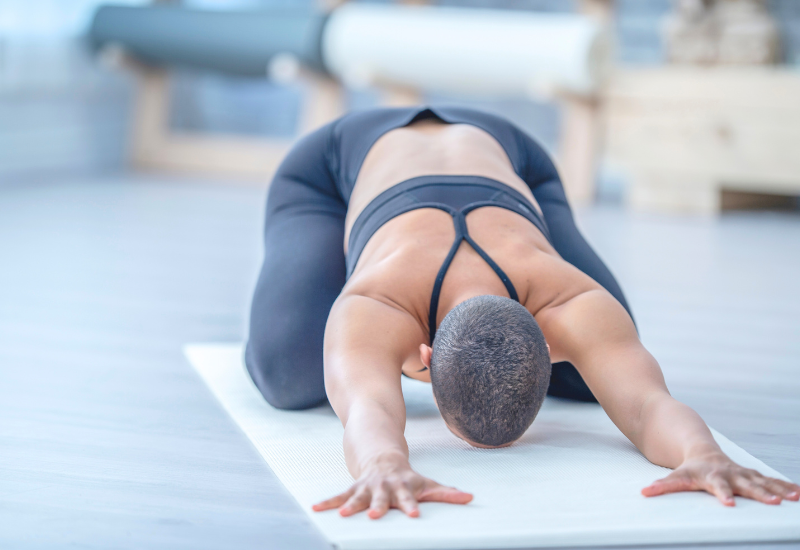
How to Do It:
Kneel on your mat and sit back on your heels. Extend your arms forward and rest your forehead on the mat. If your forehead doesn’t reach the mat, you can place a block or pillow underneath for support.
Benefits:
This pose is incredibly calming and restorative. It stretches the spine, hips, and thighs while promoting relaxation and releasing tension.
Caterpillar Pose (Paschimottanasana)
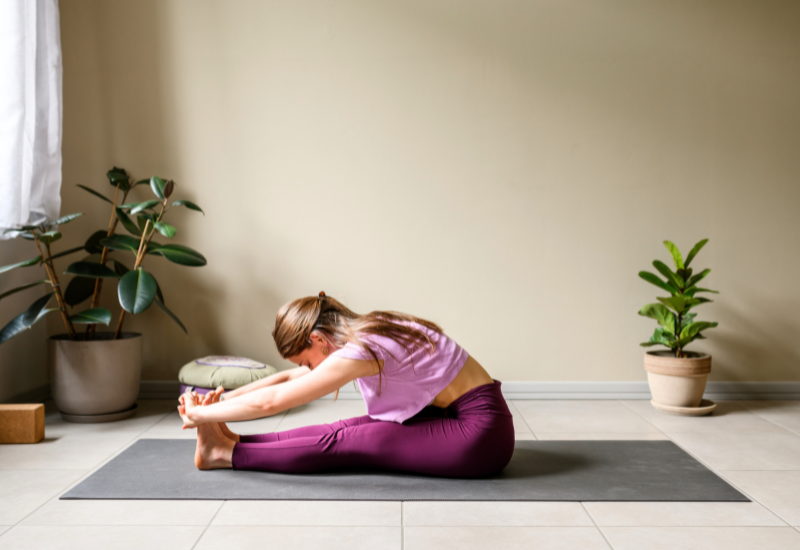
How to Do It:
Sit on your mat with your legs extended in front of you. Inhale, lengthen your spine, and as you exhale, hinge at the hips and fold forward. Allow your upper body to relax over your legs, and if it feels comfortable, hold onto your feet or shins.
Benefits:
Caterpillar pose provides a deep stretch for the hamstrings and lower back. It encourages introspection and can be very grounding.
Dragon Pose (Anjaneyasana)
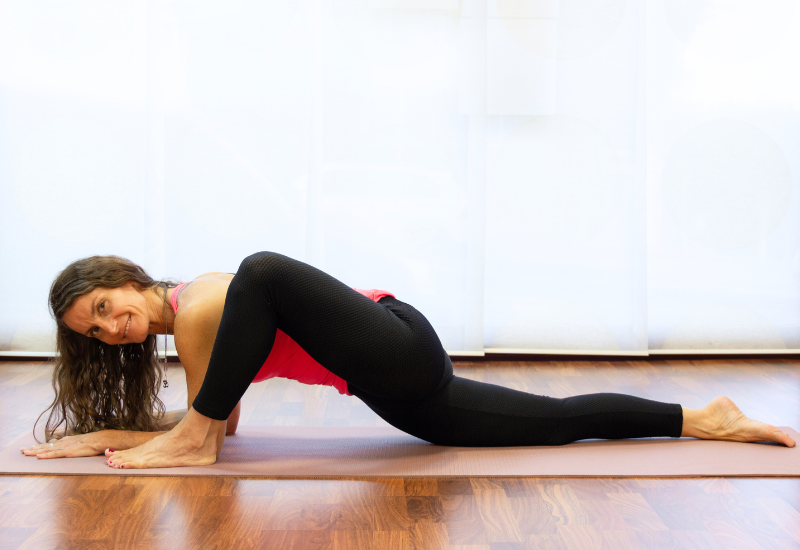
How to Do It:
Step your right foot forward into a lunge while keeping your left knee on the ground. Lower your hips forward and down, allowing a stretch in the hip flexors. For an added variation, you can raise your arms overhead or keep them resting on your front knee.
Benefits:
Dragon pose opens the hips and strengthens the legs. It’s great for releasing tension in the hip flexors and quadriceps, areas that often get tight from sitting.
Supported Bridge Pose (Setu Bandha Sarvangasana)
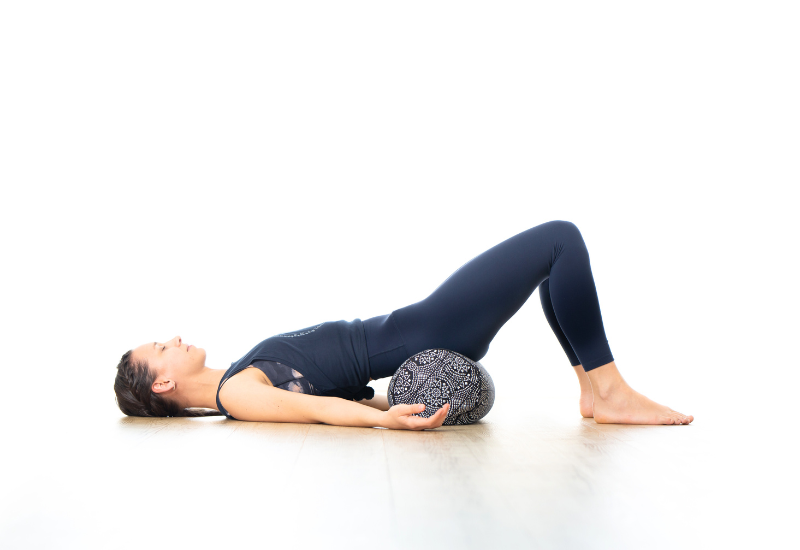
How to Do It:
Lie on your back and bend your knees, placing your feet flat on the mat hip-width apart. Lift your hips toward the ceiling, placing a block or pillow under your sacrum for support. Relax your arms at your sides and take deep breaths as you hold this pose.
Benefits:
This pose opens the chest and stretches the spine while promoting relaxation. It’s excellent for those with tight lower backs and helps to relieve stress.
Reclining Bound Angle Pose (Supta Baddha Konasana)
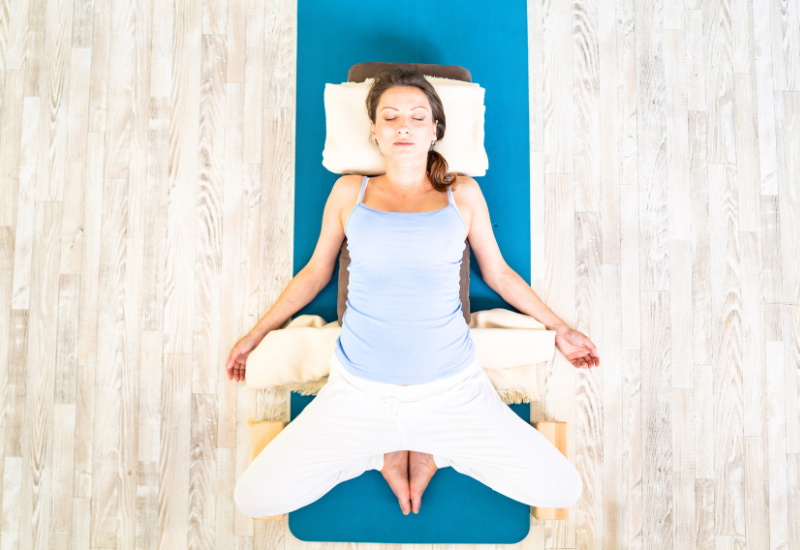
How to Do It:
Lie on your back and bring the soles of your feet together, allowing your knees to drop out to the sides. You can place pillows or blocks under your knees for support if that feels better. Relax your arms at your sides or place them on your belly.
Benefits:
This pose is fantastic for gentle hip opening and relaxation. It encourages a sense of calm and stillness, making it a perfect ending pose for your Yin practice.
Takeaway
In summary, Yin yoga is undoubtedly suitable for beginners. It offers a gentle, meditative approach to yoga that emphasizes deep stretches and mindfulness. The benefits of increased flexibility, stress relief, and self-awareness make it an appealing choice for anyone looking to enhance their well-being.
Yin yoga’s accessibility, coupled with its focus on self-discovery and relaxation, allows beginners to cultivate their practice in a supportive environment. Whether you’re completely new to yoga or seeking a different experience, Yin yoga welcomes you with open arms. So why not roll out your mat, take a deep breath, and dive into the soothing world of Yin yoga? You might just find it to be the perfect complement to your journey.
Happy practicing, and remember — every time you step onto your mat, you’re taking a step toward becoming more in tune with yourself. Enjoy the journey!

